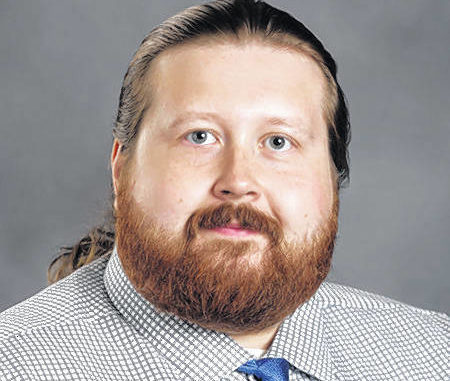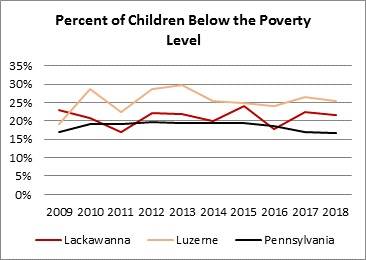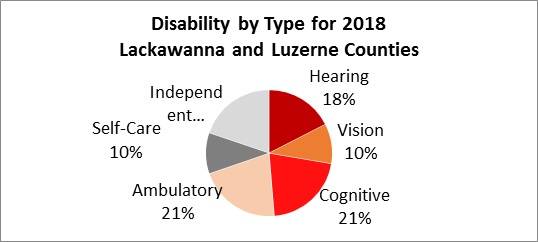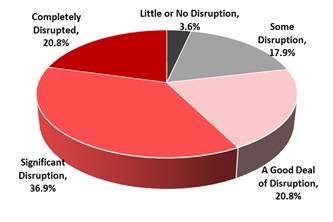
Chew



The series
This is an occasional series looking at economic indicators followed by The Institute for Public Policy and Economic Development at Wilkes University and what they mean to Northeastern Pennsylvania.
WILKES-BARRE — Numerous individuals throughout Luzerne and Lackawanna Counties and the commonwealth face physical, economic or social challenges.
According to Andrew Chew, senior research and policy analyst at The Institute for Public Policy and Economic Development at Wilkes University, there is an ongoing need for social services to assist these citizens in their daily lives.
Chew said the recipients of social services are often older individuals, those with mental and physical health challenges, and lower-income families.
“A large portion of the population has faced the consequences of an uneven economy since the recession in 2008, and despite generalized economic growth in recent years, there remains a persistent demand for government-funded services as well as assistance from charitable and faith-based organizations,” Chew said.
Teri Ooms, executive director of The Institute, said the social services section of the 2020 Indicators Report describes important factors related to social service programs within Lackawanna and Luzerne counties and the Commonwealth of Pennsylvania.
Ooms said the indicators tracked cover the Keystone STARS program, children living in poverty, children in foster care, households receiving food stamps, individuals receiving cash assistance, medical assistance and children’s health insurance programs, the population of seniors 65 years and older, the number of senior centers, the population of individuals with disabilities, and certain tax credits. Social services include government-funded services usually provided to those in need of essentials, such as health care, food, etc.
“Social services, now more than ever, is a necessity in the region as these organizations are rising to the challenge of assisting disenfranchised individuals in our community,” Ooms said. “This sector has always had a heavy lift due to higher incidences of poverty.”
According to Chew, Pennsylvania has expanded Medicaid under the Affordable Care Act to cover adults under 65 years with incomes up to 133 percent of the Federal Poverty Level as of Jan. 1, 2015.
“As a result, a greater number of individuals are eligible for Medical Assistance,” Chew said.
Over 22 percent of the Pennsylvania population is eligible for Medical Assistance, and in both Lackawanna and Luzerne counties, the number of eligible individuals grew by 22,000 between July 2015 and July 2019 – though there was a slight decline from 2018 to 2019. Statewide and regionally, enrollment in the Children’s Health Insurance Program (CHIP) has typically grown for the last several years.
Chew said data from Pennsylvania Partnerships for Children — via the Annie E. Casey Foundation — estimates a total of 1,045 children in foster care in the two counties. This total includes all individuals ages 0 to 20 in foster care, and represents less than one percent of all children in the two-county region. This population has declined over the time period analyzed. Statewide, 25,441 children (0.8 percent) were in foster care from October 2017 to September 2018 – an increase of 60 children from the previous year.
Chew went on to say that both statewide and in the two-county region, racial and ethnic minorities are disproportionately represented in the foster care population. Statewide, Chew said non-white or Hispanic individuals comprise about one-third of the total population of individuals younger than age 20, but account for 56 percent of the foster care population.
Older Pennsylvanians also possess a particular need for social support, Chew said.
”Many senior citizens live on fixed incomes and face significant health care issues,” Chew said. “Within the two-county region, the percent of the total population aged 65 and older remains higher than the statewide percentage, and the total number of seniors in the region is over 105,000.”
Chew said the number of individuals in the region with a disability has remained relatively steady — 33,478 in Lackawanna County and 49.068 in Luzerne County, or 16.2 percent and 15.8 percent of the population respectively — indicating a continued need for support for a variety of disabilities.
Chew added that there are also several federal income tax credits that are in ways similar to social assistance programming. The Earned Income Tax Credit (EITC) can provide significant income, in the form of an income tax refund, to lower income households. Regionally, about 18 percent of tax returns received the EITC as of 2017; this percentage has seen some growth since 2011 — particularly in Luzerne County.
Chew said The Institute recently completed an assessment of social services agencies after the onset of COVID-19 and operating restrictions — over 160 organizations in northeastern Pennsylvania responded.
“The financial and operational impacts on organizations and agencies vary, as each organization is different, but in many cases they are highly disruptive,” Chew said. “Nearly 6 in 10 organizations reported having their operations significantly or completely disrupted by the pandemic.”
Chew said many adapted service delivery to virtual or telehealth platforms, while others do work that simply cannot happen until further restrictions are lifted.
“Many also reported financial concerns,” Chew said. “Some stated that their fundraising abilities were impacted, while others were not able to operate services that bring in revenue through charges or reimbursements.”
Chew said several organizations mentioned having already cancelled annual fundraising drives or events, and others mentioned having to cut development staff.
Over 85 percent of organizations have had some or all employees working remotely,” Chew said. “And 29 percent have temporarily laid off or furloughed staff, while 8 percent reported having permanently or indefinitely laid off staff.”
Reach Bill O’Boyle at 570-991-6118 or on Twitter @TLBillOBoyle.
tinyurlis.gdclck.ruulvis.netshrtco.de
مقالات مشابه
- چگونه کنفوسیوس مقابله با یان هوی زمانی که او به سرقت برده برنج?
- Witness has narrow escape as homemade device explodes in car
- کوتاه فصل تابستان توپ را به ماندن تیز یک چالش
- ترفند های زندگی و خانه داری - ترفند های هوشمندانه خانگی
- شرکت صادرات و واردات کالاهای مختلف از جمله کاشی و سرامیک و ارائه دهنده خدمات ترانزیت و بارگیری دریایی و ریلی و ترخیص کالا برای کشورهای مختلف از جمله روسیه و کشورهای حوزه cis و سایر نقاط جهان - بازرگانی علی قانعی
- WeChat and TikTok Banned
- درمان ژنیکوماستی مردان : داروها و عمل جراحی
- آخرین: پلیس سیاتل: فرد زخمی در 2 تیراندازی
- مطالعه جدید نشان می دهد ترک در زیر لوله متان احساساتی چاله
- پنسیلوانیا AG باز می شود جنایی پروب به خانه های سالمندان